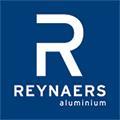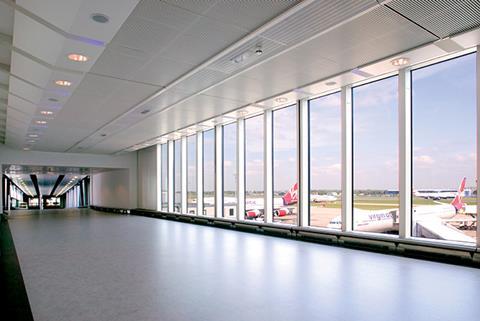The latest in our CPD series considers the importance of unitised curtain walling, design considerations as well as legislation and testing issues. This module is sponsored by Reynaers Aluminium

How to take this module
UBM’s CPD distance-learning programme is open to anyone seeking to develop their knowledge and skills. Each module also offers members of professional institutions an opportunity to earn between 30 and 90 minutes of credits towards their annual CPD requirement.
This article is accredited by the CPD Certification Service. To earn CPD credits, read the article and then click the link below to complete your details and answer the questions. You will receive your results instantly, and if all the questions are correctly answered, you will be able to download your CPD certificate straight away.
CPD CREDITS: 60 MINUTES
DEADLINE: 5 DECEMBER 2014

INTRODUCTION
Curtain walling is a building envelope that is intended to support only its own weight and withstand the effects of environmental forces such as wind. It is not intended to assist the structural integrity of the building. There are two main types of curtain walling construction: “stick” and “unitised”.
In stick construction, the curtain wall frame is constructed mainly on site with mullions and transoms supporting glass, spandrel panels, metal panels and brise-soleils, connected piece by piece. Each mullion is usually supported by the floor or perimeter beams.
In unitised construction, on the other hand, the curtain wall is composed of large units that are assembled in the factory, shipped to the site and erected on the building. Aluminium profiles are used to form the frame, which is normally one-storey high. Opening vents, glazing and infill panels are built into units before being transported to site. As with stick construction, each unit is usually supported by the floor or perimeter beams.

KEY ELEMENTS CURTAIN WALLING SYSTEMS
Stick curtain walling
Stick curtain walling systems are versatile and allow for the integration of other systems, such as sliding doors and windows. They tend to be less specialised and can be built by all types of fabricators as they are not dependent on having a large factory.
However, stick systems do require multiple steps to erect and seal the wall, which means more time is spent on site – an approximate rule of thumb would be that 70% of the work is carried out on site, with 30% in the factory. This incurs further costs, such as labourers’ time.
Unitised curtain walling
For unitised curtain walling, about 30% of the work is done on site, while 70% is carried out in the factory. The complete assembly of the units in the factory brings a number of benefits. These include:
- Improved quality control
- Concurrent manufacture and site preparation – units can be assembled while the structural frame is being built. The facade can also be completed a floor at a time, allowing parallel internal work
- Quicker installation, requiring less manpower on site
- No need for scaffolding
- Can be installed from the interior of the building. This is ideal for high towers or building sites where there is a tight footprint
- Less space is needed on site for layout – another advantage for urban sites with space limitations.
Another advantage of unitised systems is that, unlike stick systems, they do not transfer impact noises from floor to floor or horizontally from room to room. This is because the unitised panels are separated by linking gaskets. The different materials (ie, gasket to aluminium), become acoustically excited to different levels, thus creating full separation at the junctions between units.
The increased use of factory assembly introduces other important considerations. These include the following:
- The workshop has to be adequately equipped to handle finished elements
- Additional transport is required to get finished elements to site
- Additional equipment is required on site for installation of the modules.

DESIGN CONSIDERATIONS
Unitised facades offer a number of design options. They can integrate opening elements, such as a top-hung and parallel opening windows, both of which can also be motorised for ease of operation. Sun-screening systems, spandrel panels and other infill panels can also be included
Aluminium is typically used for facade frames because of its strength and stability. It is also highly durable, moisture and corrosion-resistant and 100% recyclable.
Mullions in a unitised system tend to be slightly larger. This is because they have an open section, compared to the tube-shaped mullions used in a standard stick system.
There are a number of options for frame finishes, including anodised aluminium and RAL powder coatings.
In terms of glazing, the specification can create different aesthetic effects. These include:
- Modular glazing, which holds the glass using picture-frame-effect glazing beads
- Structural sealed glazing, where the glass is structurally bonded, giving a continuous glazed appearance to the facade.
Various levels of thermal performance are offered, from standard to high insulation options. All variations are thermally broken but in high thermal insulation options the additional performance can be achieved by inserting fibreglass reinforced polyamide strips in a skeleton structure to create multiple chambers.
LEGISLATION AND TESTING
The recognised industry standard for curtain walling in the UK is the Standard for systemised building envelopes (SSBE) from the Centre for Window and Cladding Technology. CWCT is an industry-funded information provider and trainer in the field of building envelopes and glazing. It publishes both standards and guidance.
SSBE incorporates BS EN 13830:2003 Curtain Walling, Product Standard, and other relevant performance standards and Building Regulations. The CWCT standard covers the performance specification, testing, inspection and assessment of building envelopes constructed from systems of components. These include:
- Curtain walling
- Rainscreen cladding
- Composite panel systems
- Slope glazing
- Window walls
- Glazing screens
The CWCT standards for air, water and wind resistance are based on environmental conditions found typically in the UK. If specifying in other countries with a different climate, modifications must be made.

Air permeability
The airtightness test measures the volume of air that would pass through a closed window at a certain air pressure. The peak test pressure is determined by the specifier based on one of the classes in BS EN 12152: 2002 Curtain Walling, Air Permeability, Performance Requirements and Classification:
| Class | Peak pressure |
|---|---|
| A2 | 300Pa |
| A3 | 450Pa |
| A4 | 600Pa |
| AE xxxx | >600Pa |
The specifier must decide the level of airtightness required for a particular building. A higher test pressure may be specified if a more airtight building is required.
Water penetration resistance
Water tightness testing involves applying a uniform water spray at increasing air pressure until water penetrates the window. The peak test pressure is determined by the specifier based on one of the classes in BS EN 12154:2000 Curtain Walling, Watertightness, Performance Requirements and Classification:
| Class | Peak pressure |
|---|---|
| R5 | 300Pa |
| R6 | 450Pa |
| R7 | 600Pa |
| RE xxxx | >600Pa |
The specifier must decide the level of water resistance for a particular building based on the degree of exposure to the weather. For example, in a coastal location, they may wish to test to a higher peak pressure.
Wind resistance
The wind load resistance is a measure of the profile’s structural strength and is tested by applying increasing levels of air pressure to simulate the wind force. The performance requirements with regards to wind resistance of curtain walling are listed in BS EN 13116:2001 Curtain Walling, Resistance to Wind Load. Due to the many diverse elevational layouts and variations within curtain wall installations, it is not considered practical to structurally classify the large variety of curtain wall systems and purpose-designed constructions.
INSTALLATION
Unitised curtain walling can be installed either from the interior of the building using a beam on the floor above, or from the outside using a crane. The installation team must be safely connected to the structure using a lifeline or temporary balcony system.
The modules are transported to each floor level, lifted to the correct position and installed onto each floor slab. This involves hooking them onto brackets which are secured to the main substrate and levelled using jacking bolts.


How to take this module
UBM’s CPD distance-learning programme is open to anyone seeking to develop their knowledge and skills. Each module also offers members of professional institutions an opportunity to earn between 30 and 90 minutes of credits towards their annual CPD requirement.
This article is accredited by the CPD Certification Service. To earn CPD credits, read the article and then click the link below to complete your details and answer the questions. You will receive your results instantly, and if all the questions are correctly answered, you will be able to download your CPD certificate straight away.
CPD CREDITS: 60 MINUTES
DEADLINE: 5 DECEMBER 2014
Privacy policy
Information you supply to UBM Information Ltd may be used for publication and also to provide you with information about our products or services in the form of direct marketing by email, telephone, fax or post. Information may also be made available to third parties. UBM Information Ltd may send updates about Building CPD and other relevant UBM products and services. By providing your email address you consent to being contacted by email by UBM Information Ltd or other third parties. If at any time you no longer wish to receive anything from UBM Information Ltd or to have your data made available to third parties, contact the Data Protection Coordinator, UBM Information Ltd, FREEPOST LON 15637, Tonbridge, TN9 1BR, Freephone 0800 279 0357 or email ubmidpa@ubm.com. View our full privacy policy at www.building.co.uk/cpd

















No comments yet